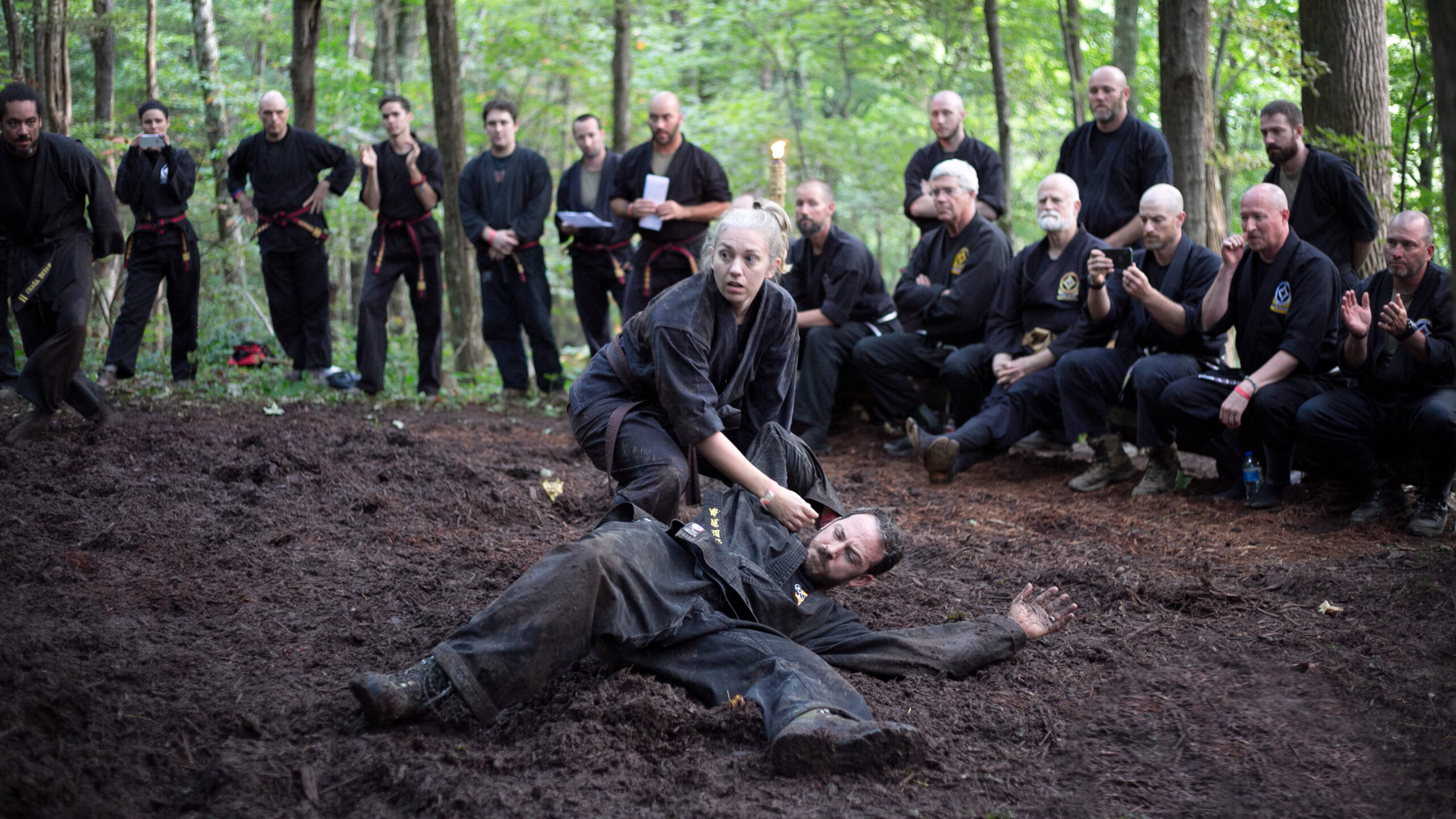 Jun
12
Jun
12
Mai-ai (Gap) vs. Ku-Kan
- June 12, 2022
- 0 Comment(s)
“Mai-ai” and “Ku-kan” are two terms that have been regularly referenced in my To-Shin Do training by several different teachers. These terms can describe the same thing if used a certain way, but they can also be used to describe subtly different “distances”. I have heard both used to describe the distance between two combatants, also known as “range”, or the “gap”. “Gap” can be used to describe a physical distance or space, it can also be used to describe a break in time or the gap in between techniques. Range specifically refers to the space between two fighters, as in “he’s in range for a strike”.
“Ku-Kan” was defined to me by an early teacher as “the killing distance,” or the recognition of when my position relative to my opponent puts me in range for an attack. Knowledge and instantaneous appreciation of this distance are critical in developing yourself as a capable fighter. There is a point, that is never the same because of our unique builds and circumstances, that once crossed, a committed attacker is going to have to engage or risk being overrun. There is a point so close to your attacker that you likely won’t be able to respond if a surprise attack is launched. There is likely a point at which an attacker would consider the need to attack but may be hesitant because you seem just slightly too far.
This knowledge can be trained, developed, and ultimately leveraged. With practice, you can foresee your opponent’s likely attacks, and with more practice, you could skillfully force their hand. Imagine the power of the purposeful execution of these principles. Once you get beyond the necessary basics, I believe that this awareness should be developed as early as possible.
To develop these skills, you must train with as many partners as possible to appreciate the differences in limb and torso lengths. You should also include lots of weapons training and weapons defenses with many different length tools. There is a lot to developing this skill but I have found it incredibly worth it.
Mai-ai, or “Gap”, can have a more complex nuance in its definition. It can certainly describe the distance between two opposing forces, like Ku-Kan.
Mai-ai can also be used to describe a time interval to be capitalized on. A break in the rhythm or cadence of a sequence of movements is a good example.
An additional gap to describe could be a lapse in attention or intention of an adversary. For example, once an opponent is thrown, it can be more simple to advance your position immediately, while they are disrupted, rather than backing away and letting your opponent regroup mentally and physically.
At our dojo, we remind our members to attack “in the transition”.
Mai-Ai, Physical distance: The space between you and your opponent can be manipulated and taken advantage of in many ways. You can “lead” your opponent into anticipating your next location only to adjust at the right moment in order to subdue them. Rickson Gracie in his book “Breathe”, describes a story that his father told him and his brothers about the jungle warriors of old Brazil, who hunted jaguar. The hunter would make himself seen by the jaguar, and allow himself to be stalked, all while hiding his short spear. The hunter had to allow the jaguar to close the distance and attempt to ambush him, waiting until the very last moment to deploy the spear at a point which the jaguar had committed to the onslaught. If done unskillfully too soon, the jaguar wouldn’t put himself at risk and either escape or continue to hunt the hunter with the knowledge of the hunter’s advantage. Executed too late then there was one less hunter in the jungle.
Mai-Ai, Gaps in time: Rhythm gaps can be manipulated and taken advantage of in much the same way as “distance gaps”. Precedence can be set through the cadence of movements, lulling your opponent into a familiar rhythm, only to be broken at the opportune moment, allowing you to counter-attack at a time when your adversary isn’t expecting it. We have to be aware of this concept when defending ourselves because our expectation of a certain rhythm can lead to “end-gaining” (focusing on our desired end-result while losing focus (frequently at the expense of) the means of achieving said result). End-gaining is a way that we are brought out of the present moment because our brain thinks it recognizes a pattern to take advantage of. The goal is to stay ready for anything but expect nothing.
Mai-Ai, Space between techniques: Not many things naturally happen in a vacuum. Our perception of the world’s events and the actual events themselves are the result of incomprehensible quantities of causes and effects.
Back when I was in middle school we used to joke on the playground that our fight would only consist of two hits; “I hit you and you hit the ground”. It turns out that some fights are in fact like that but more often than not they have several exchanges, transitions, and “techniques” (using this term loosely) applied.
The “gap” between these exchanges, transitions, and techniques can all be exploited with the spirit of Mai-ai. For example, when you throw an opponent to the ground, there is a moment of shock and reorienting that your adversary goes through. That moment is an opportune time to take advantage of to advance your position or end the altercation. Another, maybe more advanced application could be feeding your opponent an easily counter-able technique and then taking advantage of the counter that they use, as they use it.
Attack in the transitions!
Mai-Ai: Break in the attention or intention of an adversary: The last gap that I will talk about in this series is the gap in your opponent’s attention or intention. An “attention” gap can come about when your adversary has fallen prey to a feint or misdirection that you’ve successfully applied. An “intention” gap can manifest when your opponent changes their emotional state inside of the altercation. For example, when things don’t work out as easily as your opponent hoped and they shift to a more determined or desperate mindset. Or maybe they switch from viscous confidence to fear as you start to turn the tide. Either way, these are mental gaps that you can exploit with skill.
Gaining this skill to a point where it can be truly utilized is expensive though. Lots of time training with resistant partners is necessary to cultivate this sensitivity and timing. I believe that it is a worthwhile investment in your time if you are serious about Self Defense based Self Development.
